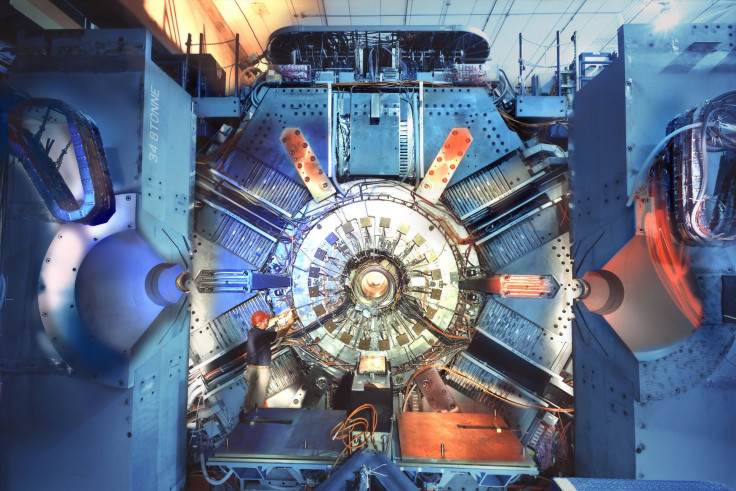Dark Matter Update: Decade-Old Data Limits Dark Photon’s Existence Possibilities

As scientists continue to search for direct evidence that would prove once and for all the existence of dark matter, they have tried numerous approaches. One of those is the search for a hypothetical particle called the dark photon, first proposed in 2009, which would bridge the gap between visible matter and the remaining mysterious bulk of the universe.
Dark matter, which accounts for 85 percent of the observable universe’s mass, is inferred only through its gravitational effect on regular matter. One of the theories about the constituents of dark matter speaks of a “dark” force which is responsible for the interactions among the particles that make up dark matter, as well as their interaction with visible matter. The dark photon is postulated as a candidate for carrying this dark force.
Physicists from the 240-member BaBar Collaboration performed new analysis of data recorded at the SLAC National Accelerator Laboratory in Menlo Park, California, between 2006 and 2008. They “scanned the recorded byproducts of particle collisions for signs of a single particle of light — a photon —devoid of associated particle processes.”
A statement Wednesday from the Department of Energy’s Lawrence Berkeley National Laboratory (Berkeley Lab) explained that a “single photon, radiated from a beam particle, signals that an electron-positron collision has occurred and that the invisible dark photon decayed to the dark matter particles, revealing itself in the absence of any other accompanying energy.”
The researchers' search for the elusive particle came up empty, but what that means is, physicists now have a smaller range of possibilities were the dark photon can exist — if it exists at all, that is.
“Although it does not rule out the existence of dark photons, the BaBar results do limit where they can hide, and definitively rule out their explanation for another intriguing mystery associated with the property of the subatomic particle known as the muon,” Michael Roney, BaBar spokesperson and professor at the University of Victoria, Canada, said in the statement.
Muons are elementary subatomic particles with a negative charge, like electrons, but are much heavier than the latter. One of their fundamental properties is their spin, and its measurements show some discrepancy with the expected value by about 0.0002 percent. That may seem a very small number to most people, but at the level of fundamental physics, it is quite serious.
The dark photon was considered one of the candidates that could be causing this anomaly but the BaBar analysis pretty much “rules out these dark photon theories as an explanation for the g-2 anomaly, effectively closing this particular window, but it also means there is something else driving the g-2 anomaly if it’s a real effect,” Yury Kolomensky, a physicist in the Nuclear Science Division at Berkeley Lab and a professor at the University of California, Berkeley, said in the statement.
The study, titled “Search for Invisible Decays of a Dark Photon Produced in e+e− Collisions at BaBar,” was published in the journal Physical Review Letters.
© Copyright IBTimes 2024. All rights reserved.




















